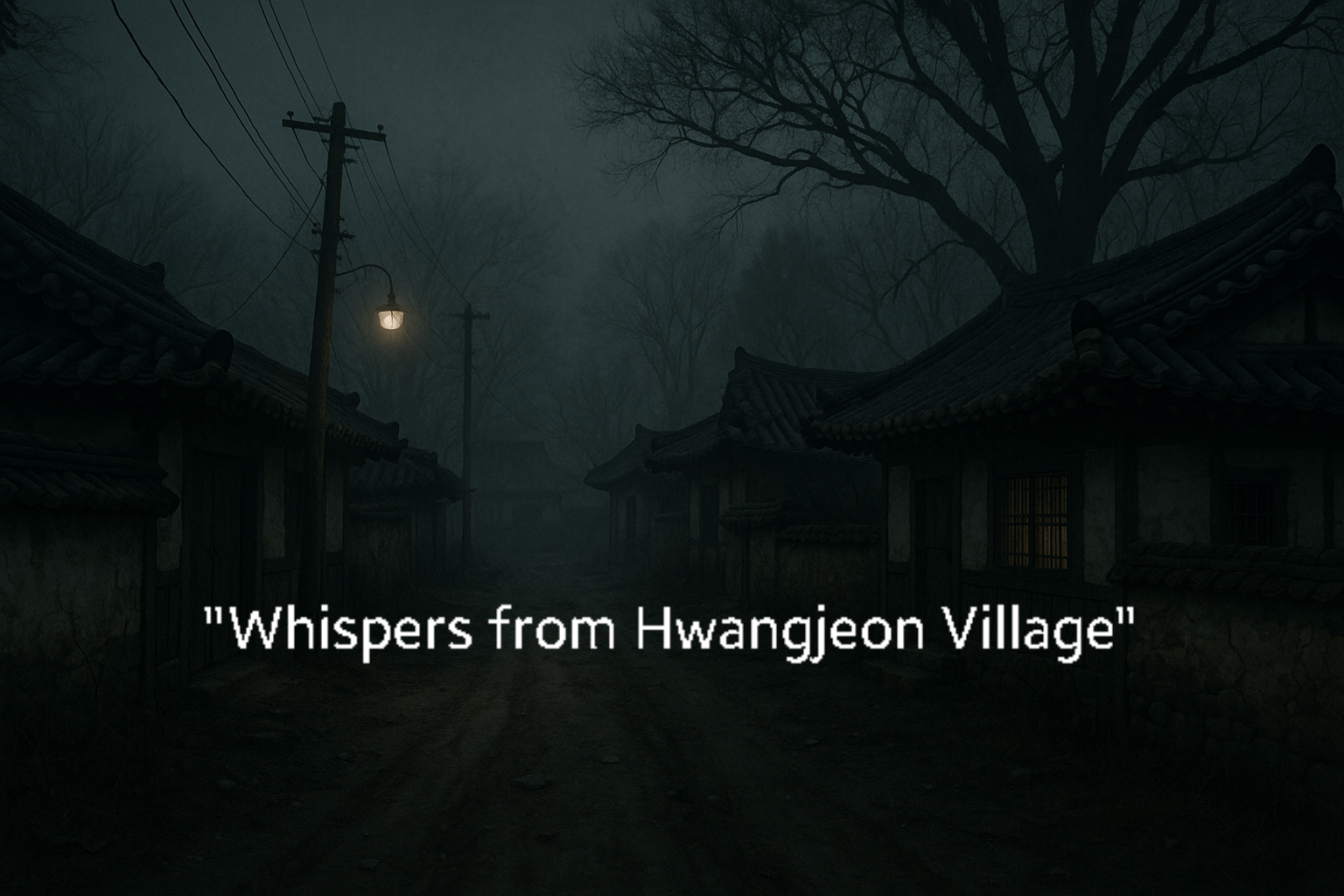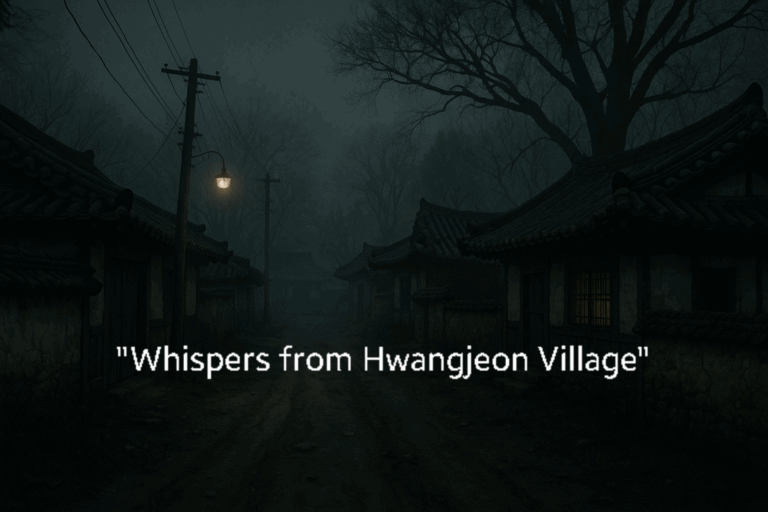
“Whispers from Hwangjeon Village”
Nestled deep within the shadowy folds of Mount Jirisan lies Hwangjeon, a forgotten Korean village that rarely shows up on any modern map. Locals say the trees grow too close, the mist lingers too long, and the crows never leave.
What truly cursed Hwangjeon, however, was not the forest — it was the Hanok house at the village’s edge. They called it the Gaksi Jip — “the Bride’s House.”
According to hushed rumors, a young bride named Seo-young once lived there with her husband during the Joseon Dynasty. Just days after their wedding, he left to join the royal guard in the north and was never seen again. Seo-young, in her wedding hanbok, waited at the gate every day until her bones gave way beneath her silks. When villagers finally entered the house, they found her standing in the courtyard, dead but somehow still upright. Her eyes had rotted, but the sockets were stained black—as if she’d stared into something dark enough to burn her soul away. Since then, strange things had haunted Hwangjeon.
In 1999, a Seoul-based travel blogger named Jiwoo visited the village, intrigued by its isolation. She was the first outsider in decades. She wrote of the fog that clung to her skin, of how the trees “whispered” in a language she couldn’t place. Her blog ended abruptly with one chilling entry:”I heard a voice calling me from the Gaksi Jip last night. It sounded like me… but wasn’t.”Her remains were never found.
Ten years later, a construction crew tried to demolish the old Hanok house, aiming to modernize the area. On the first day, a worker fell from the roof and snapped his neck. The next day, another vanished during lunch break. The third day, the foreman locked himself inside the house and slit his own throat — using a shard from the broken wedding mirror still hanging in the bride’s room.The project was abandoned.
Old residents say Seo-young was no ghost, but something worse — a spirit consumed by Han, the deep Korean sorrow that clings to the living like mold. She didn’t cry or scream like Western ghosts. She waited — patient, beautiful, rotting in silence.
No one enters the Gaksi Jip now. Not even stray dogs.
But earlier this year, a group of young urban explorers decided to livestream their night in Hwangjeon. The footage — which was quickly scrubbed from most sites — began with typical bravado: flashlights, nervous laughter, and mocking whispers.
Then came the knocking. From inside the house.
Three soft knocks.
Then again.
And again.
Always in sets of three.
Then came the whispers — not in Korean, not in any known language. The camera panned toward the door. It creaked open by itself.
The last frame showed the reflection of one of the girls in the mirror — except her reflection smiled when she didn’t.
Police found the group’s car abandoned on the roadside. No bodies, no footprints, just seven pairs of shoes placed neatly at the gate of the Gaksi Jip.
Now, no one goes to Hwangjeon. The government claims it doesn’t exist.
But if you ever find yourself lost in the mists of Mount Jirisan, and you hear soft knocking from behind the trees — do not answer. Do not follow the sound. And if you see a woman in a red wedding hanbok, her face veiled and her feet floating slightly above the ground…Run.
Don’t look back.
She’s still waiting.
And she thinks you’re him!

Your comment will appear immediately after submission.